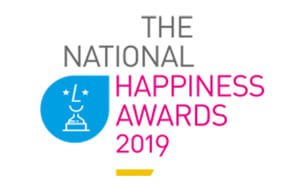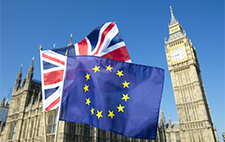European retail buying alliances have been a force on the European scene for nearly two decades. They are proliferating and growing in strength. Why?
The rise of omni channels created a threat for traditional bricks-and-mortar retailers, shifting the balance of power and giving suppliers more choices, sometimes forced, such as where to spend their promotional money.
Additionally, the reach of online retail highlighted discrepancies in consumer-packaged goods across borders and between geographically neighboring countries. As retail margins became squeezed, the buying alliance emerged. Although similar to historically operated cooperatives in many territories, buying alliances differ in that the retailers involved are not in competition with one another. Retailers that join buying alliances typically have strength in different countries or states, allowing them to analyze terms offered by the same supplier for the same branded product in each location.
These alliances are not limited to a few small ‘mom and pop’ stores; they can include the largest retailers in each country or state building the alliance. For example, the Epic buying alliance comprises Germany, Sweden, Poland, Switzerland’s number one retailer, and Portugal’s number two retailer. Each member has significant local power and top-level relationships.
The primary target for these alliances is branded goods. Eurelec (Rewe, E.Leclerc, and Ahold Delhaize, from 2025) states, “Our purpose, as a European wholesaler, is to negotiate and buy FMCG products from the big multinational manufacturers for the Austrian, French, German, Portuguese, and Polish markets of our retail clients.”
The results have been exposing and damaging for consumer goods companies, which have faced several obstacles. Primary challenges include legacy decision-making and differing approaches to local P&Ls. Significant ‘drift’ can occur within the same organization when negotiating with similarly sized counterparties.
The start of the solution often involves bringing leaders from affected business units together, but complications can arise. There may be resistance to relinquishing decision-making to a broader alliance, leading to defensiveness and difficulties in achieving a like-for-like comparison of trade terms or country P&Ls.
This situation is further complicated when the buying alliance makes its request after completing its analysis, putting the balance of knowledge and power firmly with the alliance.
Aligning challenged leaders, despite working within the same organization with common goals, strategies, and structures, requires significant effort. Decision-making can become fraught, as pressure leads to emotional responses, which are rarely optimal.
A buying alliance typically consists of four to six geographically dispersed retailers with differing P&Ls, margins, financial structures, measures of success, and cultures. Despite these differences, they align behind a common cause because the potential rewards are substantial.
Where next?
Retailer trends often transmit from one region to another. The global sweep of COGs in the early 2010s is an example. The challenges facing retailers are not diminishing, and the availability of more immediate shopper analysis may offer new insights.
Key individuals with significant experience in establishing and managing buying alliances frequently appear in new organizations, bringing valuable comparative knowledge and expertise. For instance, Gianluigi Ferrari, who became managing director of the Coopernic buying alliance in 2006, later founded Core in 2014, Agecore in 2016, and is now CEO of Epic. Each alliance demonstrated greater reach and strength than its predecessor.
Chris Atkins, a dynamic negotiator at The Gap Partnership, observes that buying alliances are becoming larger and more influential across Europe, with evident benefits. As these alliances may eventually extend to other regions, Atkins emphasizes that preparation through effective negotiation strategies is crucial.
Five key actions can be taken in preparation:
- Assess the region. Identify retailers operating in discrete territories (i.e., with limited overlap) who could collaborate to improve terms.
- Compare trade terms, discount levels, and pricing across retailers, including those in neighboring states or countries.
- Understand the differences and reliability of the situation. Determine if comparisons are valid or if similar terms are provided through different mechanisms, effectively comparing retailer P&Ls within the organization.
- Create a governance structure that empowers the project (negotiation) team to highlight and act on decisions. This may require regional or country business units to relinquish some decision-making authority for the greater good.
- Develop an action plan to address the highest levels of exposure and set targets for the sales team to negotiate amended terms.
It is advisable not to delay. Early preparation can mitigate the lack of transparency and understanding of relative terms experienced by individual retailers within each country’s P&L.
Conducting this exercise provides valuable insights into the relative profitability of negotiating levers and identifies retail partners who may have obtained better terms than their trade share warrants, possibly due to historical power.
Rebaselining Joint Business Plans and annual terms regularly, rather than incrementally increasing from previous agreements, is also good practice. Adjusting trade terms can take years, so having an action plan in place represents sound future-proofing. Even if buying alliances do not enter a specific market, a more robust commercial view of trading structures will still be beneficial.
For those interested in understanding the commercial and competitive impacts of buying alliances and legislation, the article Retail Alliances and Joint Purchasing Agreements: Evaluating Benefits and Challenges in Light of the Revised Horizontal Guidelines by Vanja Reinkowski of CEG offers excellent insight.

























